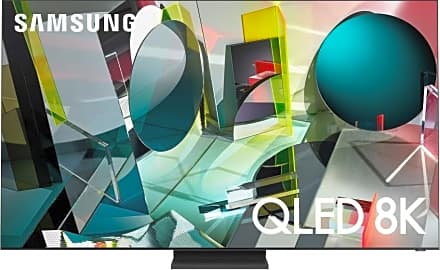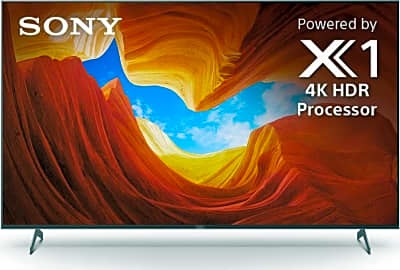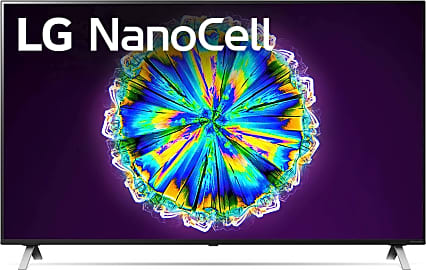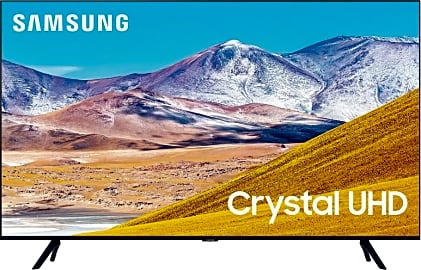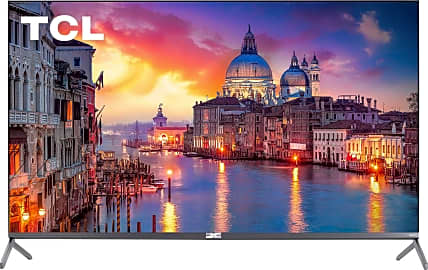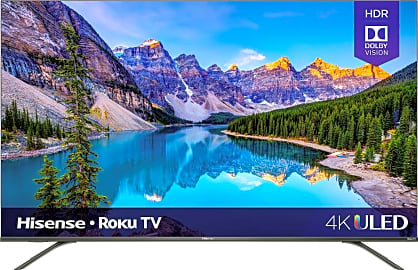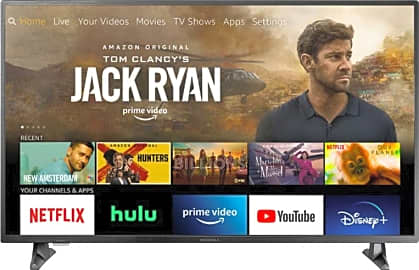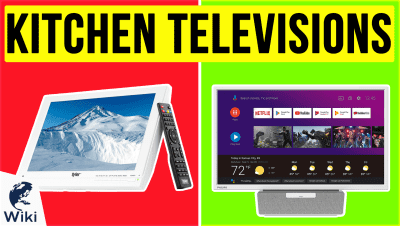The 10 Best Smart Televisions

This wiki has been updated 41 times since it was first published in February of 2015. Today's televisions can do a lot more than just display what's fed to them through an HDMI cable. Modern smart TVs combine powerful hardware and software to upscale content, act as a smart home hub, and provide access to a variety of streaming services. We've compiled and ranked some of the best choices based on picture quality, affordability, and the effectiveness of their operating system. When users buy our independently chosen editorial selections, we may earn commissions to help fund the Wiki.
Editor's Notes
July 13, 2020:
Given the reliable yearly turnover in this sector, everything from our last ranking has been supplanted by new models from the big companies like Samsung, Sony, and LG, with some additional budget offerings from the likes of Hisense and TCL. The most important development among all these models might be the fact that OLED prices seem to have dropped a little bit, though models like the LG GX Series OLED are still considerably more expensive than even full array backlit offerings like the Sony X900H. OLED does remain the gold standard for black depth and nuanced contrast through an image, but it might evolve in the coming years to luminescent copper diodes that are currently in development, so it might be smart to hold off on the current OLED standard if you're hesitant or you think something like QLED can hold you over for about a decade.
Concurrently, 4K prices continue to drop as the industry creeps toward embracing the next evolution in resolution: 8K. You see it here on the Samsung QLED Q900T, which is prohibitively expensive at the sizes necessary to appreciate that kind of pixel density without sitting one foot from the screen. But the advancements in the company's QLED technology and in other technologies driven by all that 8K R&D are trickling down to their latest models, like the Samsung Q90T Series, which offers some of the best upscaling out there, in addition to an intelligent speaker system that can determine the motion of onscreen action and pan the sound accordingly to create a sense of movement.
May 22, 2019:
If you've shopped for a TV lately, you may have noticed that's basically impossible to find one WITHOUT built-in "Smart" features. Most of the time, people focus on aspects of picture quality like contrast, color ranges, accuracy, and refresh rates to determine which set is right for them. But with all of these operating systems in the mix, a lot of users find that one interface and its features satisfy their needs far better than others.
Both of TCL's offerings are reasonably priced; in fact, their cheaper option is one of the best inexpensive TVs yet produced. They use the popular Roku interface, which is almost inarguably the leader in built-in streaming capabilities. They're affordable and multipurpose choices, but they do somewhat lag behind the others in terms of black levels, brightness, and color accuracy. But if you're looking for an all-in-one solution, they're both great choices.
LG's webOS is widely hailed as the operating system that has revolutionized smart TVs over the last couple of years. It's quick and responsive and it's easy to control using the included remote or your voice. We've highlighted the C9, their newest OLED offering, as it's got one of the best-looking panels yet to hit the market. Last year's B8 is no slouch either, though. If you want to get their excellent user experience without breaking the bank, LG also provides a much more budget-friendly option in the UM7300.
Sony uses an official, Google-developed version of Android TV, so you can imagine that it's incredibly functional and has access to tons and tons of different apps. All of Sony's TVs look fantastic; their main drawback is that they're also quite expensive across the board.
Finally, Samsung is known for their bold colors and exceptional dynamic contrast, but what some don't realize is that they also integrate their powerful SmartThings hub into most of their new TVs, allowing the unit to act as the centerpiece for all your smart devices. They're also the only brand that currently supports AMD's Freesync technology, which is a game-changer for PC and Xbox gamers. Samsung TVs are generally somewhat costly, but once you've watched movies or played games on one, it's easy to justify the cost.
Special Honors
Music Computing Motion Command You'll be hard-pressed to find any computer monitors of decent size with built-in touchscreen technology, let alone an actual TV. If you run a boardroom or a content creation space such as a music studio or video development house, you may need something you can really get your hands on in order to maximize your workflow. We wouldn't by any means recommend it for a home theater, but it is a pretty interesting solution, if you need it and can afford it. It comes in a wide range of sizes and supports either two- or ten-point touch control. musiccomputing.com
Talk Back To Your TV
You never have to switch input sources or buy additional hardware to clutter up your living room to make it work.
There were scenes in a television show from the 1990's, called Saved By The Bell, in which the show's protagonist, Zach, would periodically break the fourth wall and speak directly to the camera. In doing so, he spoke to the audience and as a five-year-old boy watching the show, I wondered if there was a TV out there that would allow me to talk back to the actor. So, I asked my mother.
She laughed at the idea of a TV smart enough to allow a conversation to take place between its stars and its viewers. After all, these shows were pre-taped. Then the internet came along, and our TVs have gotten a heck of a lot smarter than ever before. In 2011, for example, a Japanese video streaming service, akin to YouTube, created live programs that responded to feedback from the live audience. It was reminiscent of one of those choose-your-own-adventure books.
If you had one of the smart TVs on the market at the time, you could have probably used it to interact with the broadcast the way I wanted to as a child.
That's because smart TVs are all about connectivity and recognition. For the most part, they function like any other high-end television. They have tremendous resolution, USB and HDMI ports to display the lion's share of available media in today's market, and they fill the room for a remarkably low cost.
Deeper in the systems of these TVs, however, is an interactive menu system connected to the internet that allows you to stream content from your favorite providers like YouTube and Netflix. You never have to switch input sources or buy additional hardware to clutter up your living room to make it work.
Some of these TVs also have the ability to recognize your voice and respond to specific commands so that your setup experience on the way to your videos is seamless and fast.
Resolved To Make A Decision
As you peruse the smart TV options available, you may be surprised by their large size, ranging from 65 to about 80 inches diagonally or more. The thing about a TV with good resolution is that it has to be particularly large for you to appreciate it without having to sit right on top of it.
Think of the pixels on your TV like the dots of paint in a masterpiece from the school of Pointilism. If you took a look at one of these paintings from across the room at a museum, you'd be plenty impressed by its level of detail and clarity. If you got up close to the picture, however, you'd see that it was composed of thousands upon thousands of little dots of paint. From a certain distance, these individual dots are indistinguishable from one another.
This prevents colored light from bleeding over in even the smallest amount, which has the effect of greatly increasing color vibrance and contrast levels.
What this means is that pixel density is as important as overall resolution. Once upon a time, 1080p (i.e., a 1920 x 1080 resolution) was the pinnacle of home entertainment technology. The first step away from Full HD, as it's known, was the transition to 4K resolutions as mainstream. 4K offers 3840 x 1920 pixels, which is four times as many, or over 8 billion pixels. The truth is, it will be a long time before all content is produced and streamed in 4K. But even as people complained that resolution wasn't everything, the quality of many other aspects of display panels rose sharply. Things like refresh rates, native contrast, black levels, and color uniformity became more and more important, and panel production quality increased to meet demands for such good-looking technologies. One side effect of this is the fact that it's now pretty much impossible to find a top-of-the-line TV with anything less than a 2160p resolution. Luckily, prices for such equipment dropped as sharply as their popularity rose, giving rise to a wide selection of large and affordable 4K TVs.
And while LCDs are still the most popular type of display, they've become far more varied than in the past. Rather than the old-school CCFL types that used an incredibly bright and heavy fluorescent light behind a liquid crystal screen, most modern TVs are lit by LEDs that flash anywhere from 60 to 240 times per second. Sometimes, these LEDs still sit right behind the liquid crystal layer in what's called a direct-lighting configuration. Some panels, though, have moved these backlights to the edges of the device, allowing for thinner and lighter appliances overall. Some of these can dim different sections of the picture individually, which helps to combat poor black levels and light bleed that were inescapable with early LED-lit screens.
There are two more high-end technologies worth mentioning, and though they aren't related to each other at all, they're sometimes confused because of their similar names. QLED, of quantum dot filtration, eschews traditional LCD color filters and passes light through a cutting-edge filter made with almost unfathomably small holes. This prevents colored light from bleeding over in even the smallest amount, which has the effect of greatly increasing color vibrance and contrast levels. Samsung first popularized its use among TV manufacturers, but other brands are now adopting their own versions of it.
OLED technology, while sounding similar, is a wildly different type of display that's interesting and beautiful in its own right. Rather than a light source shining through an active liquid crystal filter and that light being colored after the LCD allows it to pass through, OLED displays consist of multiple microscopic sub-pixels arrayed on each individual pixel's circuitry. Each pixel lights up according to the image data it's given, and these individually lit pixels combine to form what's called an emissive display, because the pixel itself emits light. They have their own drawbacks (mostly a lower maximum brightness than LCDs, but also the potential for burn-in, though that risk is constantly dropping with new developments), but their black levels, color uniformity, and motion blur are about as good as it gets.
Television Online
Long before anyone thought to make a TV that could act as its own content retrieval system, a startup out of Palo Alto, California in the mid-1990's developed a set top box for the average consumer that would allow their televisions to access the internet through their phone lines over a 56K connection. The service was called Web TV, and it came complete with its own keyboard and mouse to make surfing the web on your television that much easier. The invention was certainly forward-thinking, as increasing numbers of television companies today offer their clients internet-only packages for competitive prices, where just a few years ago the only way to save was to bundle with a cable television plan. More and more viewers are switching to online platforms.
LG's webOS, though, was the one responsible for a huge shift in how easy to the systems are to navigate, and it gets consistently great marks as to its effectiveness.
Of course, with so many customers, there's bound to be a lot of competition within the field. Years after the debut of 4K TVs, there have emerged a few different competent operating systems that make smart TVs smarter than ever before. It's no surprise that Android TV is in the mix, as Google has done a good job of getting its foot in the door in nearly every industry. LG's webOS, though, was the one responsible for a huge shift in how easy to the systems are to navigate, and it gets consistently great marks as to its effectiveness. Samsung's Tizen piggybacked off a lot of its concepts and is proving to be a powerful OS in its own right. Roku has been around since the very beginning and is one of the simplest to operate, yet it still provides a comprehensive connection to the entertainment world. There are others, as well, such as Vizio's SmartCast and Amazon's popular Fire TV, but they're not as prevalent as most.
The different smart TV suites have different levels of customization, voice control, app access, and streaming services. If you're dead set on unifying your entertainment experience, there's quite a bit of functionality to choose from, but the bottom line is that it's hard not to find a bunch of interesting shows to watch these days. The right smart TV will make that an easier task than ever.




